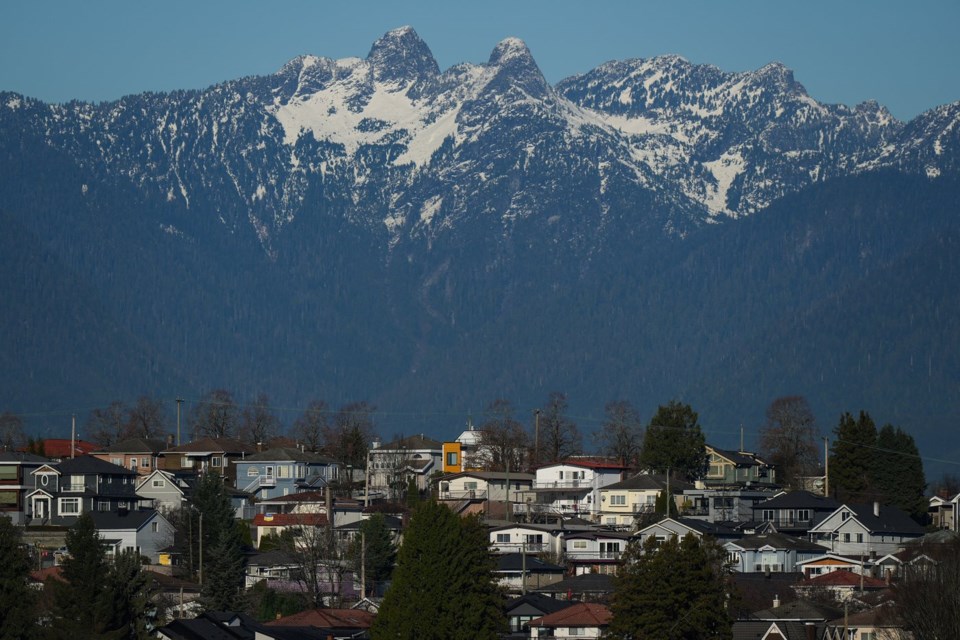VANCOUVER — The search-and-rescue organization for Metro Vancouver's North Shore mountains is warning people to do their research after international visitors became stranded in two separate incidents while relying on hiking apps to plan their routes.
North Shore Rescue was called in on Nov. 28 to rescue a man from Norway who the organization said "seriously underestimated the difficulty" of a route marked in an online hiking app.
Rescuers were back on a nearby mountain three nights later for a "virtually identical" operation, the group said in a social media post.
Allan McMordie with North Shore Rescue managed the Sunday night rescue of a man at Goat Ridge, a backcountry area behind Grouse Mountain.
He said the man from France told rescuers he had not been expecting snow, despite two of the local ski hills opening with fresh powder last month.
"All you had to do was look at the top of the mountains from Vancouver and know there's snow up there," he said in an interview. "To be in running shoes and not even expecting any snow was pretty naive."
The man had set out on a marked route, then decided to make his way through very rough, steep terrain to a separate trail at significantly higher elevation.
"This is rugged backcountry," McMordie said. "It's almost impassable."
McMordie could not confirm which apps the hikers in both recent rescues were using, but said a lack of any marked route or trail reports is a good indication to stop and turn around, and in any case, trip planning should involve multiple sources of information.
If the man from France had done any research, McMordie said he would have discovered the backcountry area where he was rescued is closed for the winter.
In both recent cases, he said there were signs at each trailhead with maps showing trails and topography, along with reminders about key steps in trip planning, he said.
Both men were lucky to have been able to make 911 calls, McMordie added, as service is patchy in the area and their phone batteries had nearly run out.
Above all, he said hikers should tell someone else where they're going and when they expect to return, so that person can alert local authorities if necessary.
"Absolutely nobody knew where this person was and what he was doing that day," McMordie said of the man from France.
"If he had not been able to get that (911) call out, he would still be there."
North Shore Rescue said the course taken by the man from Norway was "barely a trail" in the summer and "nothing whatsoever" in the winter, making for "full mountaineering conditions" at this time of year.
He called for help after hiking for eight hours that left him "tired, soaked (and) hypothermic" as the sun was setting," it said.
It's doubtful the man would have survived the night in the Mount Seymour backcountry if he hadn't been able to make the call, the rescue group added.
The man had been staying in a short-term accommodation and had taken an Uber to the trailhead. Only his girlfriend in Norway knew where he was, and he was not wearing or carrying adequate gear for the conditions, McMordie said.
Vancouver-based Stephen Hui, the author of several 小蓝视频 hiking guidebooks, said the rough, mountainous terrain steps away from urban Metro Vancouver and the extent of the snowpack in winter is a surprise for many visiting hikers.
Hui said online apps can be helpful and often provide commentary about trail conditions from other hikers, but it's crucial to look at additional sources of information, including complete maps and provincial and national park websites.
He said local authorities and outdoor groups have some responsibility for people heading into the backcountry, and there is room for more signage and education.
Ultimately, though, he said people must be responsible for themselves.
"We can't handhold everybody," he said. "There's always going to be dangers in hiking."
This report by The Canadian Press was first published Dec. 5, 2024.
Brenna Owen, The Canadian Press



